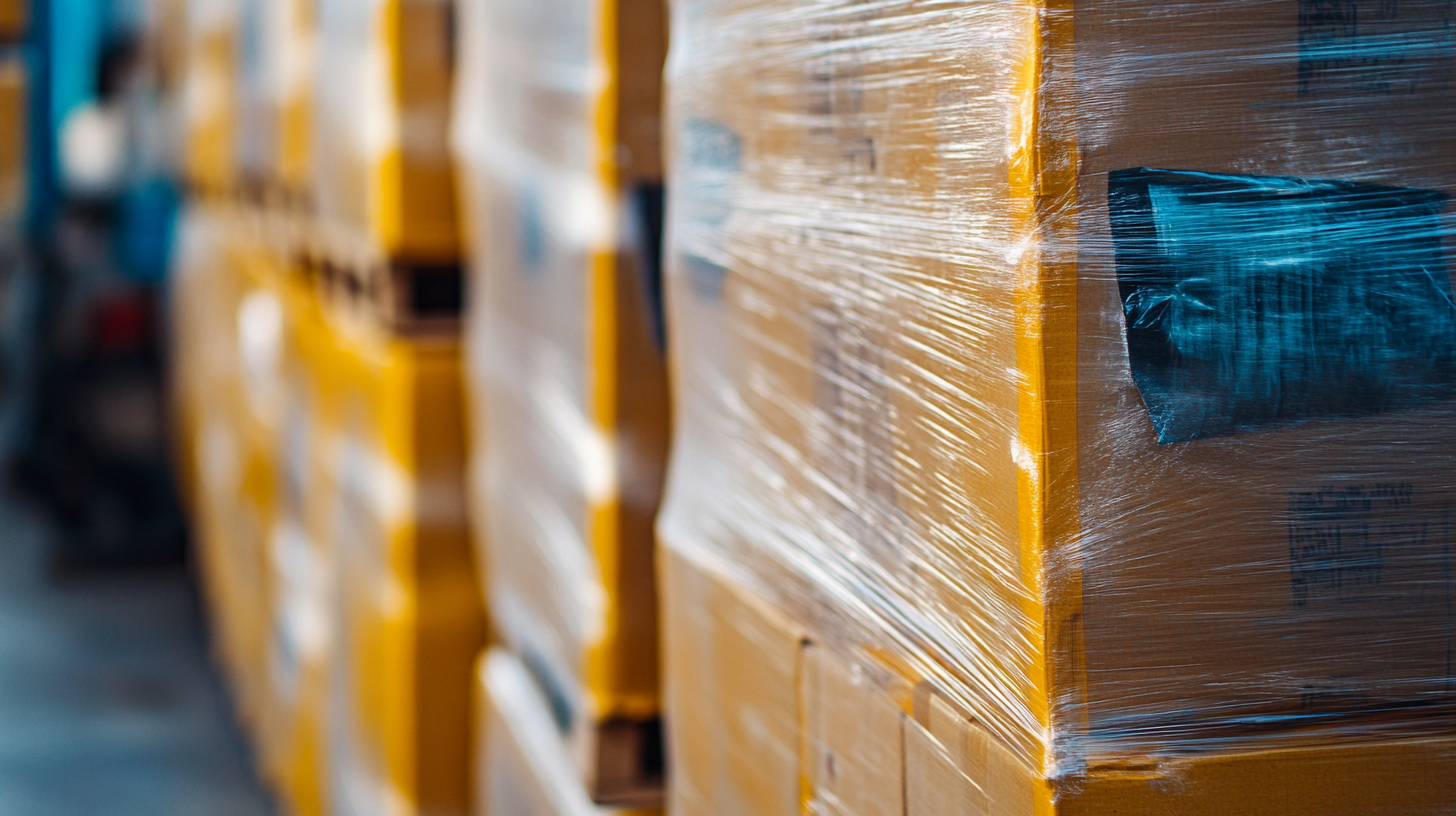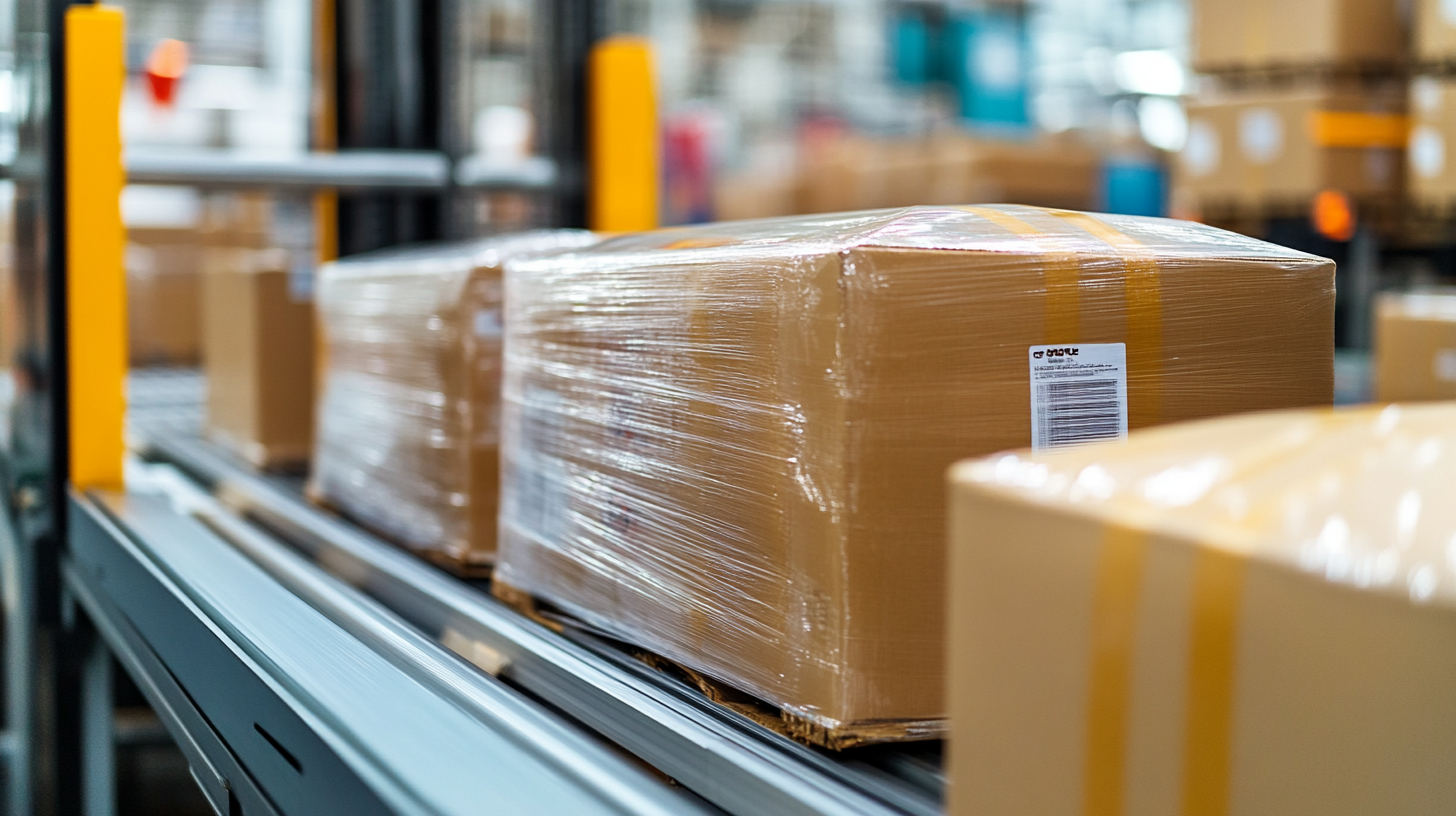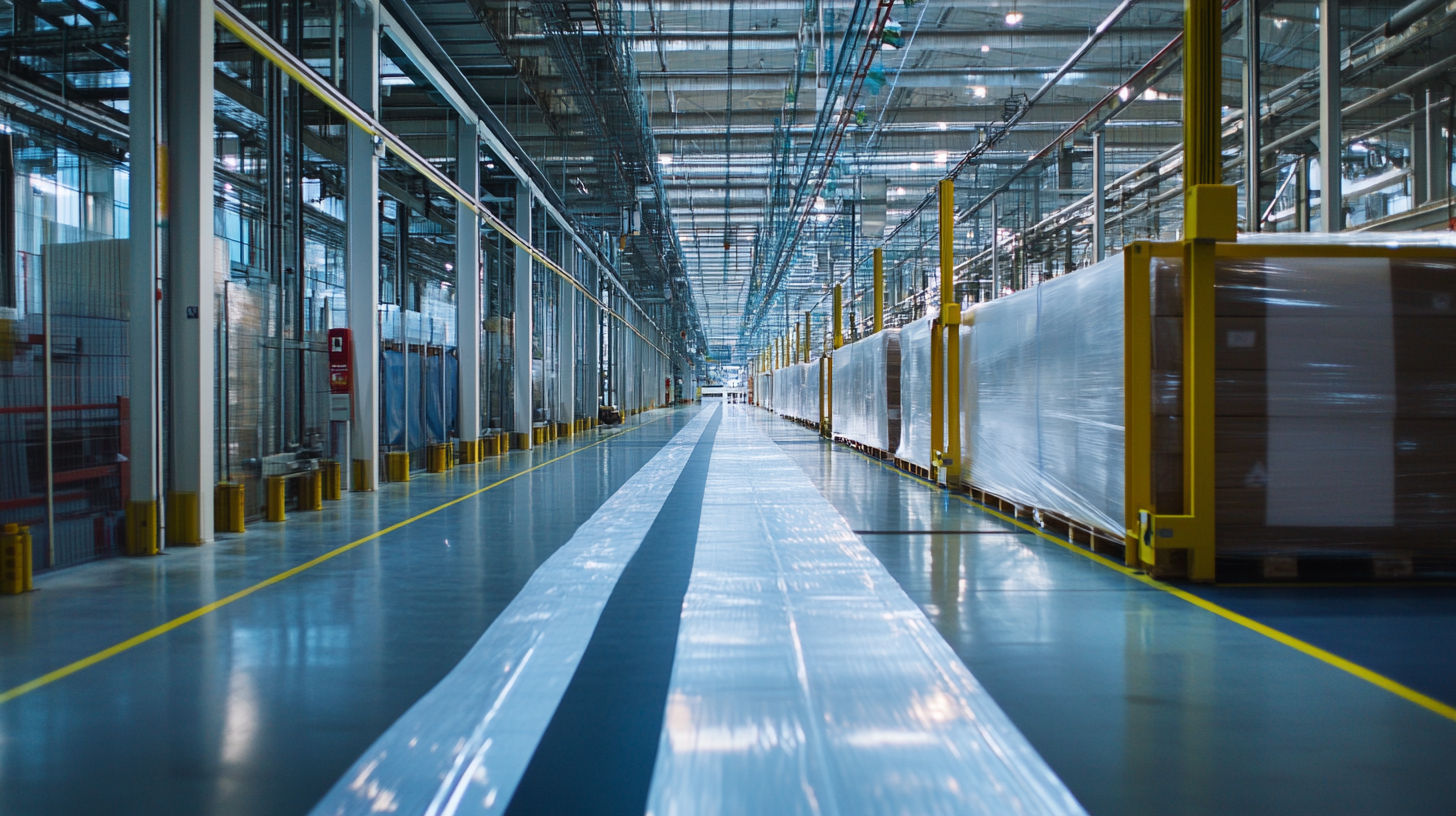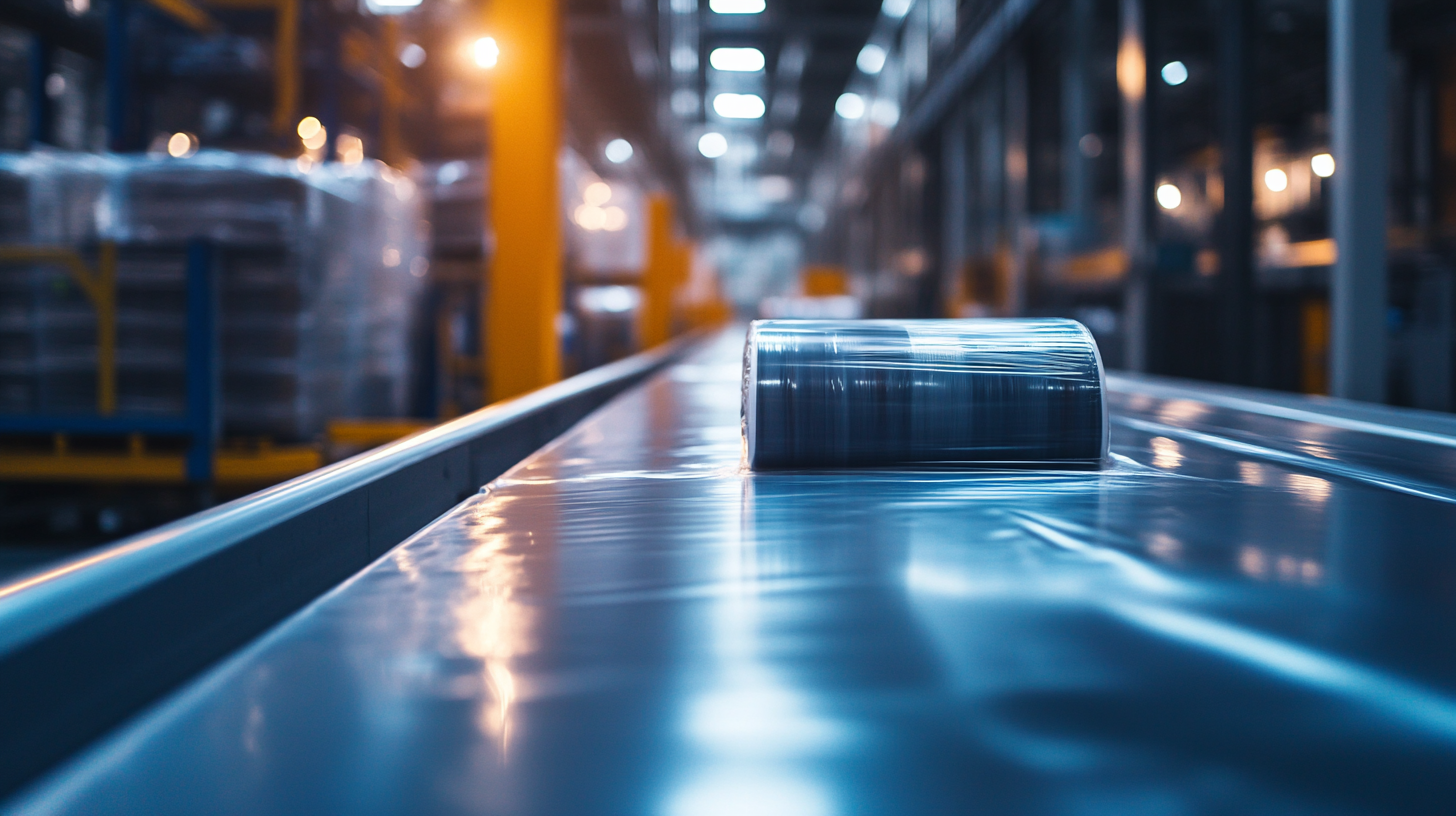Exploring the Impact of Shrink Wrapping Technology on Packaging Efficiency and Cost Reduction in Global Supply Chains
In recent years, the packaging industry has seen significant advancements in technology, particularly with the introduction of shrink wrapping solutions. According to a report by MarketsandMarkets, the global shrink wrap packaging market is projected to grow from USD 16.29 billion in 2020 to USD 25.02 billion by 2025, at a CAGR of 9.1%. This increase is largely driven by the demand for efficient, secure, and aesthetically pleasing packaging solutions across various sectors, from food and beverage to pharmaceuticals. The Shrink Wrapper has become an essential tool in modern supply chain operations, facilitating not only enhanced product protection during shipping but also streamlined processes that contribute to overall efficiency.
The benefits of using Shrink Wrappers extend beyond just product integrity. A study by Packaging Strategies reveals that companies utilizing shrink wrap technology can achieve up to a 25% reduction in packaging costs due to decreased material usage and labor efficiencies. As businesses strive to adopt more sustainable practices, shrink wrapping also offers the advantage of using recyclable materials that reduce environmental impact. This blog will delve into the transformative role of shrink wrapping technology, exploring its implications for packaging efficiency and cost reduction in global supply chains, ultimately demonstrating why this technology is becoming indispensable in today’s competitive market.

Benefits of Shrink Wrapping in Modern Packaging Solutions
Shrink wrapping technology has revolutionized modern packaging solutions, offering numerous benefits that cater to the evolving demands of global supply chains. One of the most significant advantages of shrink wrapping is its ability to provide a tamper-proof seal, ensuring that products remain secure and untouched during transportation. This aspect of packaging not only enhances product integrity but also builds consumer confidence, reinforcing brand reliability. In addition to security, shrink wrapping offers substantial efficiency in terms of space utilization. Shrink films are designed to conform tightly around products, minimizing void space and optimizing pallet loads. This compact packaging approach not only leads to reduced shipping costs but also allows for more efficient warehousing and storage. As a result, businesses can streamline their operations, cut down on excess material usage, and contribute to sustainability goals by reducing their carbon footprint. Furthermore, shrink wrapping is adaptable to various product types and sizes, making it an ideal choice across diverse industries. Its versatility allows for the packaging of single units, multipacks, or even irregularly shaped items without compromising on durability or visual appeal. By investing in shrink wrapping technology, companies can enhance their packaging processes, capitalize on cost savings, and ultimately meet the demands of today's fast-paced market.

Cost-Benefit Analysis of Implementing Shrink Wrapping Technology
The implementation of shrink wrapping technology has significantly impacted packaging efficiency and cost reduction in global supply chains. As businesses strive to enhance their packaging methods, shrink wrapping emerges as a popular choice due to its ability to provide robust protection while optimizing space and material usage. The shrink wrapping market alone is projected to surpass USD 2.8 billion by 2032, as reported by Global Market Insights, with a compound annual growth rate (CAGR) of 4.5% expected between 2024 and 2032. This growth is largely driven by the increasing demand for packaging solutions that not only secure products but also improve logistical efficiency.
A focused cost-benefit analysis of shrink wrapping technology reveals that while the initial investment in overwrapping machines can be substantial, the long-term savings in material costs and improved shipping processes yield significant returns. For instance, the global multi-functional packaging market, valued at USD 12.8 billion in 2023, anticipates a growth rate of over 7% from 2024 to 2032, indicating a broader trend in the packaging industry that favors advanced and efficient solutions. The ability of shrink wrapping to reduce product damage during transportation while minimizing wastage of materials aligns seamlessly with the sustainability goals many companies are adopting.
Moreover, the growing cosmetics packaging market, projected to reach USD 3.8 billion by 2024, showcases the versatility and appeal of shrink wrapping across various sectors. As brands seek to enhance their consumer appeal while managing costs, shrink wrapping provides a practical solution that meets these dual objectives. By investing in this technology, companies not only streamline their packaging processes but also position themselves favorably within competitive marketplaces, leveraging efficiency to drive profitability.

Impact of Shrink Wrapping on Supply Chain Efficiency and Logistics
Shrink wrapping technology has emerged as a game-changer in the global supply chain landscape, significantly enhancing packaging efficiency and logistics. According to a report by the Freedonia Group, the shrink wrap market is expected to grow at a CAGR of 4.3% through 2025, driven by the demand for cost-effective packaging solutions that also provide robust protection during transit. Shrink wrapping not only minimizes the amount of packaging material needed but also reduces the overall weight of packages, leading to lower shipping costs and improved transportation efficiency.
Furthermore, the implementation of shrink wrapping in supply chains can streamline inventory management. A study conducted by Smithers Pira highlights that using shrink-wrap technology can reduce packing time by up to 35%, allowing businesses to increase their throughput without requiring additional labor. This is particularly vital for companies dealing with high-volume shipments, as it enables faster processing at distribution centers and decreases lead times.
The logistical benefits extend to waste reduction as well. The European Plastics Converters (EuPC) reports that using shrink film can lower the volume of waste generated by up to 20%, contributing to more sustainable practices in packaging. As sustainability becomes a priority for consumers and regulators alike, companies adopting shrink wrapping technology not only improve their operational efficiency but also align with eco-friendly initiatives, strengthening their market position in an increasingly competitive landscape.

Sustainability Considerations in Shrink Wrapping Materials
The shift towards sustainability in packaging has gained significant momentum, and shrink wrapping technology is at the forefront of this movement. Traditional packaging materials have often posed environmental challenges, including high waste generation and slow decomposition rates. However, new advancements in shrink wrapping materials are reshaping the narrative, emphasizing eco-friendliness without compromising on efficiency.
Innovations in bio-based shrink films made from renewable resources can significantly reduce carbon footprints compared to conventional petroleum-based plastics. These materials not only perform efficiently in terms of protection and preservation but also offer an advantage by being recyclable or compostable. Suppliers and manufacturers are increasingly adopting these sustainable practices, recognizing that the longevity of their products directly correlates with their environmental impact.
Moreover, the integration of recycled content into shrink wrapping solutions is becoming more prevalent. Many companies are now sourcing recycled plastics to create their shrink films, further closing the loop in the packaging lifecycle. This not only helps in reducing the reliance on virgin materials but also promotes a circular economy where waste is minimized and resources are reused. As global supply chains evolve, the conscientious choice of wrapping materials is essential, aligning economic goals with sustainability initiatives to achieve a truly efficient and responsible packaging system.
Case Studies: Successful Use of Shrink Wrapping in Various Industries
Shrink wrapping technology has emerged as a pivotal solution in modern packaging processes across various industries, significantly enhancing overall efficiency and contributing to cost reductions in global supply chains. Case studies reveal that sectors ranging from food and beverage to electronics are increasingly adopting shrink wrapping due to its ability to streamline packaging operations while minimizing material waste. For example, a recent analysis highlighted that companies embracing advanced packaging technologies, including shrink wrapping, have reported up to 30% reductions in packaging costs and improvements in product protection during transit.
Furthermore, the transition towards precision operations in retail has opened avenues for shrink wrapping to address several critical challenges faced by traditional distribution methods. With the retail industry shifting from expansive stocking strategies to data-driven inventory management, companies are recognizing the importance of efficient packaging solutions that can adapt quickly to changing market demands. Recent statistics indicate that the global shrink wrap market is projected to grow significantly, underpinned by its scalability and eco-friendly characteristics, aligning perfectly with the heightened focus on sustainability and reduced carbon footprints.
Moreover, industry reports indicate that as businesses continue to embrace digital transformation and AI, the integration of smarter packaging solutions will further enhance operational efficiencies. The usage of shrink wrapping not only fulfills logistical needs but also supports legislative compliance in terms of packaging waste reduction, a growing concern in many markets today. This synergy between innovative packaging technologies and operational strategies is pivotal for industries looking to thrive in an increasingly competitive landscape.

